Soft Lattice Structures
Digital Design and Nonlinear Simulation for
Additive Manufacturing of Soft Lattice Structures
O. Weeger1, N. Boddeti1, S.-K. Yeung2, S. Kaijima3, M. L. Dunn4
1 SUTD Digital Manufacturing and Design Centre, Singapore University of Technology and Design, 8 Somapah Road, Singapore 487372, Singapore
2 Hong Kong University of Science and Technology, Division of Integrative Systems and Design, Room 6530, 6/F, School of Engineering, Clear Water Bay, Kowloon, Hong Kong
3 Harvard University, Graduate School of Design, 48 Quincy St, Cambridge, MA 02138, USA
4 University of Colorado Denver, College of Engineering and Applied Science, P.O. Box 173364, Campus Box 104, Denver, CO 80217-3364, USA
[email protected], [email protected], [email protected], [email protected], [email protected]
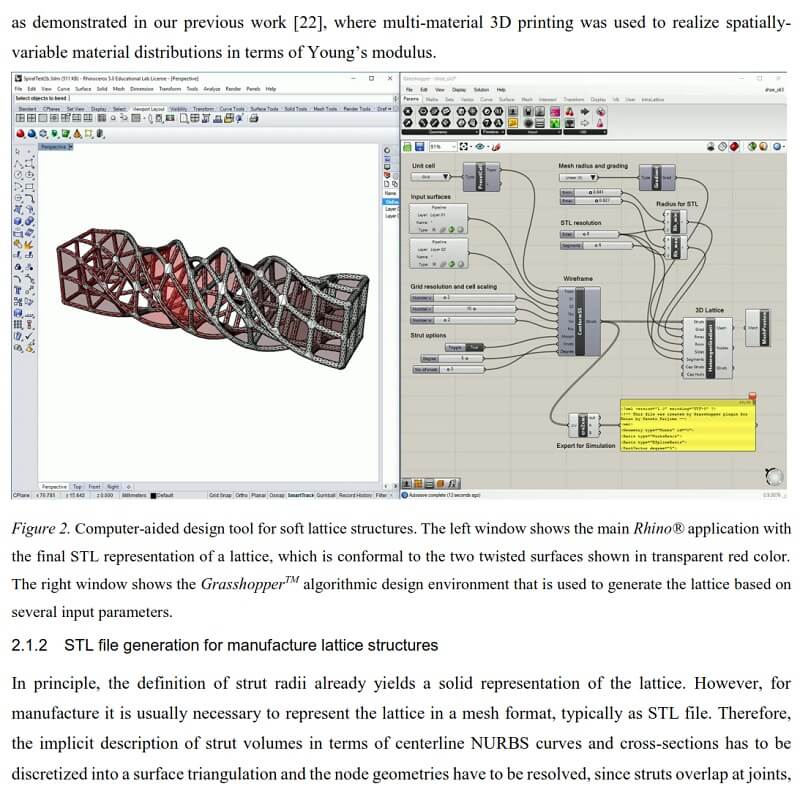
Lattice structures are frequently found in nature and engineering due to their myriad attractive properties, with applications ranging from molecular to architectural scales. Lattices have also become a key concept in additive manufacturing, which enables precise fabrication of complex lattices that would not be possible otherwise.
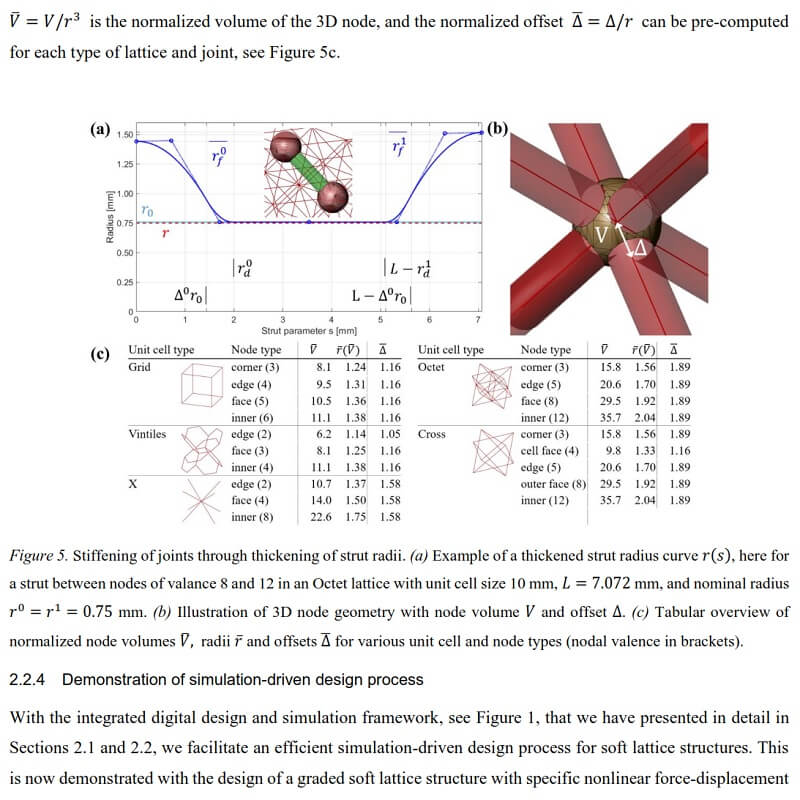
While design and simulation tools for stiff lattices are common, this article by O. Weeger, N. Boddeti, S.-K. Yeung, S. Kaijima and M. L. Dunn presents a digital design and manufacturing approach for soft lattices structures subject to large deformations and instabilities, for which applications in soft robotics, healthcare, personal protection, energy absorption, fashion and design are rapidly emerging.
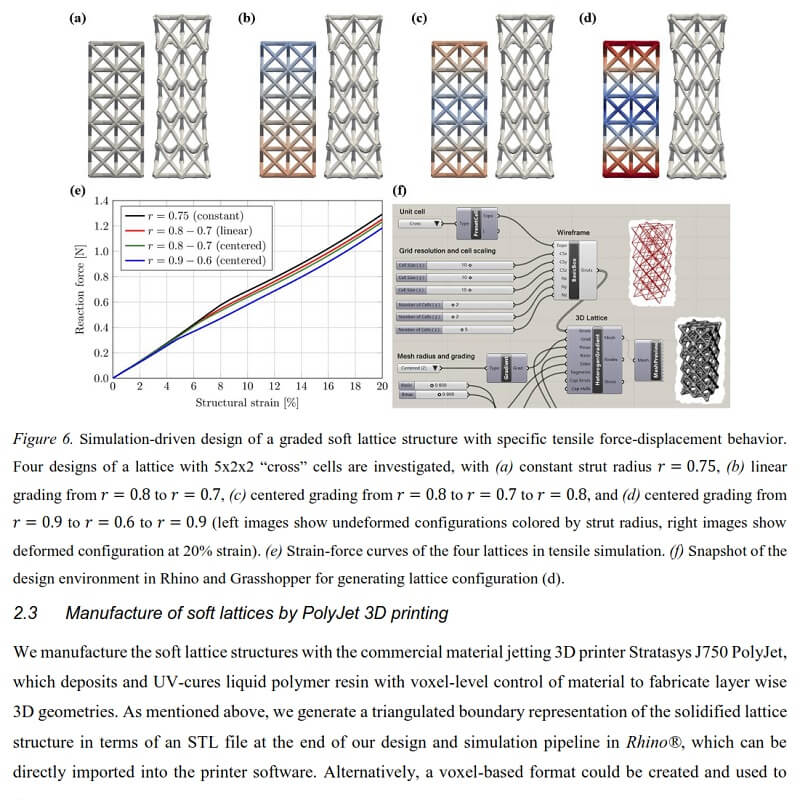
The framework admits soft lattices with curved members conforming to freeform geometries, and with variable, gradually changing member thickness and material, allowing the local control of stiffness. Authors model the lattice members as 3D curved rods and using a spline-based isogeometric method that allows the efficient simulation of nonlinear, large deformation behavior of these structures directly from the CAD geometries.
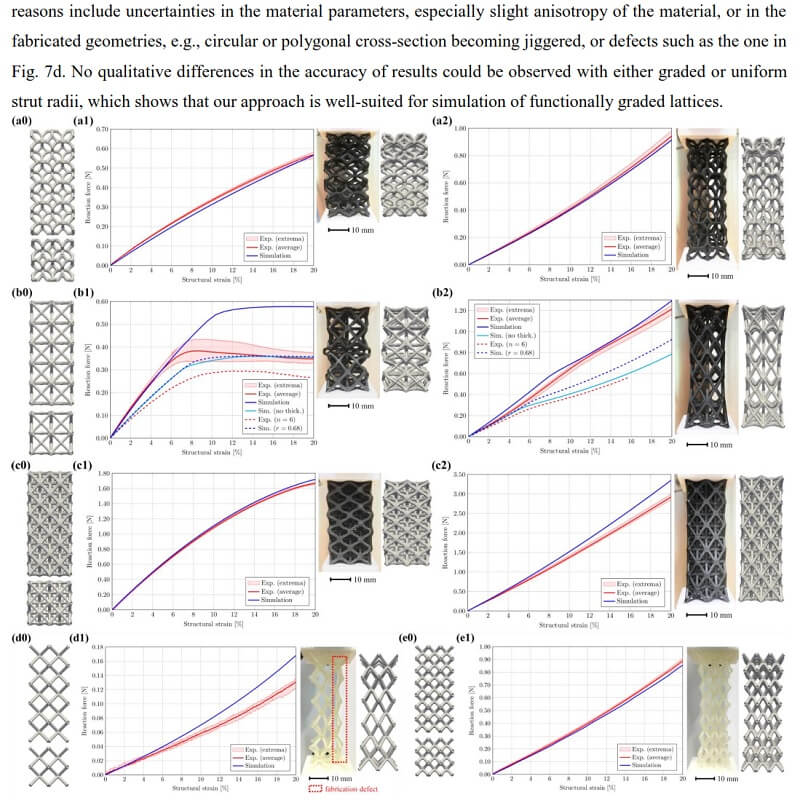
Furthermore, they enhance the formulation with a new joint stiffening approach, which is based on parameters derived from the actual node geometries. Simulation results are verified against experiments with soft lattices realized by PolyJet multi-material polymer 3D printing, highlighting the potential for design and application of non-uniform and curved soft lattice structures.
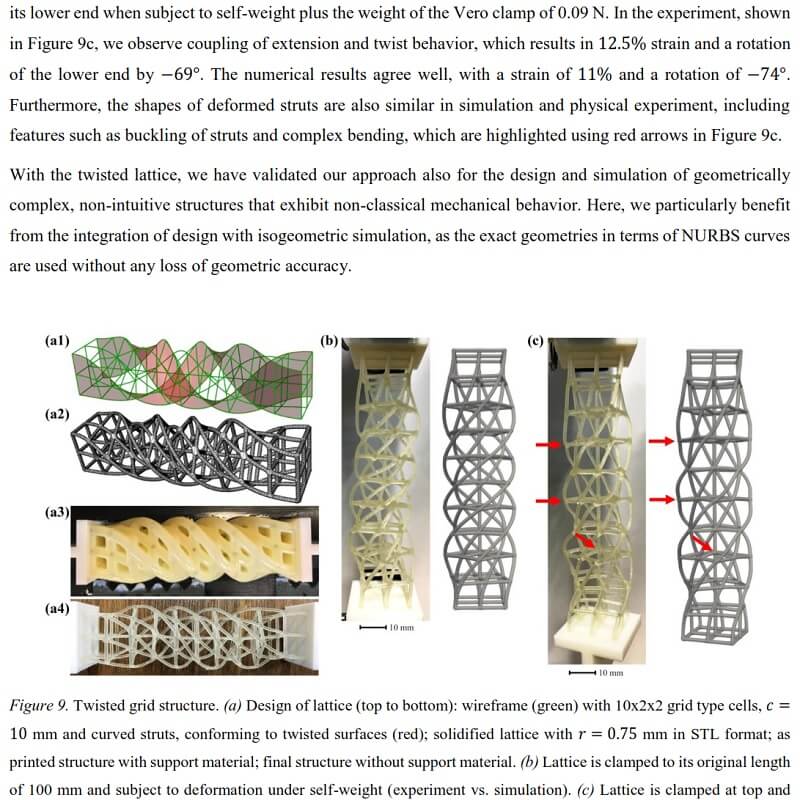
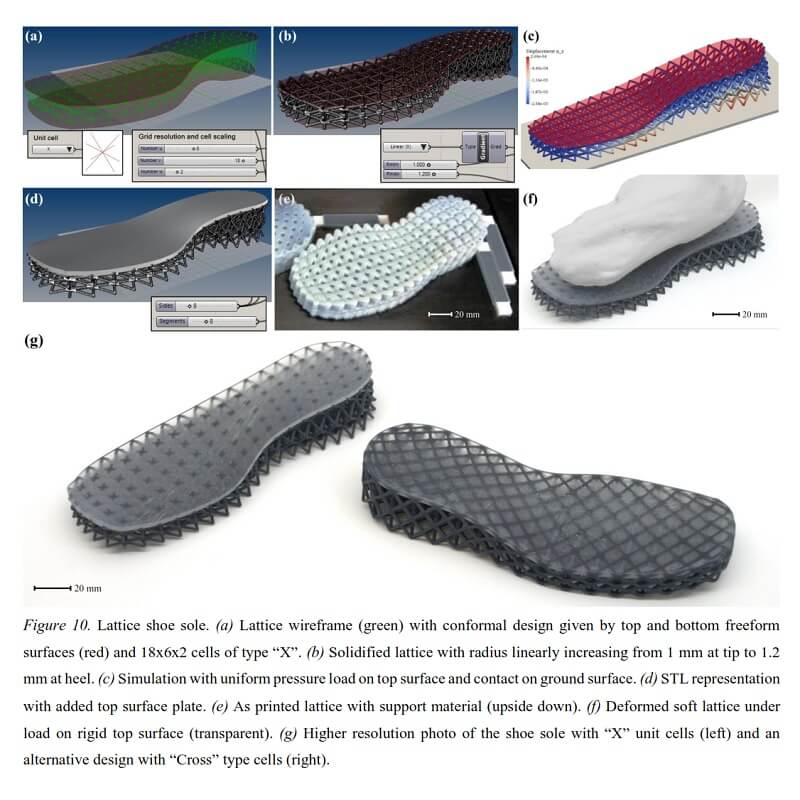




























Comments